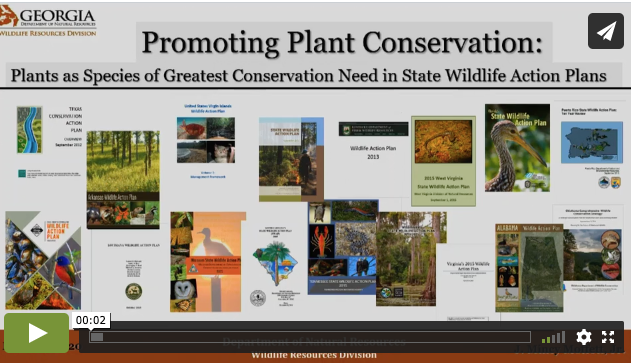
Mincy Moffett, Jr., Georgia Department of Natural Resources, Wildlife Conservation Section State Wildlife Action Plans (SWAPs) are multi-year strategies in which every U.S. state and territory assesses the health of its wildlife and lays out steps for conserving it over the long term. These plans establish a framework for conservation efforts that aim to protect […]
Read More…

Carrie Sekerak, Deputy District Ranger, Ocala National Forest Carrie Sekerak presents on the state of the isolated wetlands of Ocala National Forest. She describes the current issues faced in isolated wetland management, and gives a snapshot of best practices being applied. […]
Read More…
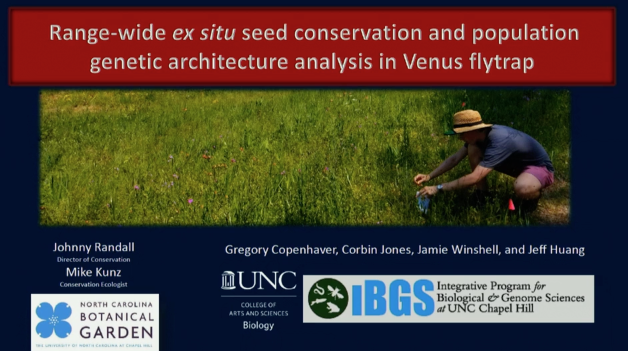
Dr. Johnny Randall, North Carolina Botanical Garden The infamous Venus flytrap, Dionaea muscipula, found across North Carolina and into South Carolina, has been seen to be declining in recent years. It is currently under review for federal listing, is ranked G2 on NatureServe, and considered vulnerable by RedList. Threats to this charismatic plant include poaching, […]
Read More…
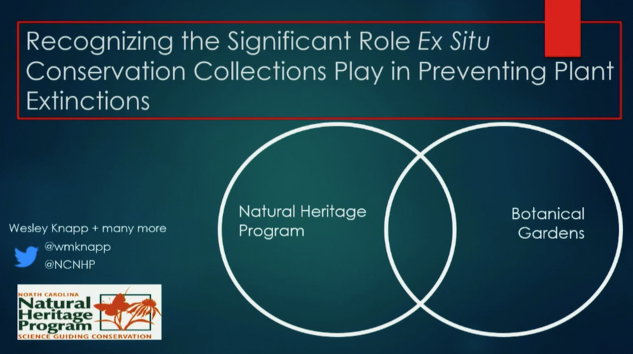
Wesley M. Knapp, North Carolina Natural Heritage Program Preventing extinction is the lowest bar for conservation success we can set and the roll of ex situ conservation efforts in preventing extinction is becoming more significant. Continued work to document the extinct plants of North America north of Mexico has resulted in the discovery that up […]
Read More…
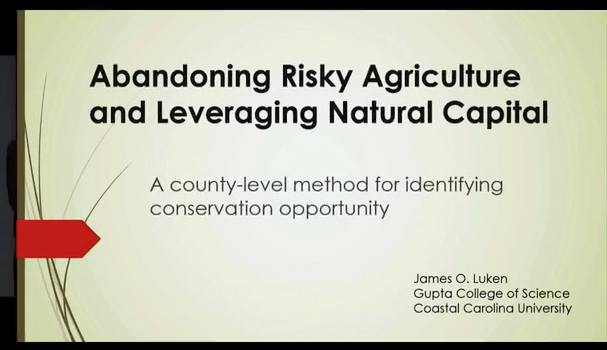
Dr. James Luken, College of Science, Coastal Carolina University Marginal land now devoted to growing harvested crops may be better suited to other land uses such as biodiversity enhancement and carbon sequestration. However, farmers are not encouraged to explore the development of these opportunities due largely to subsidized federal crop insurance (FCI). This study examined […]
Read More…
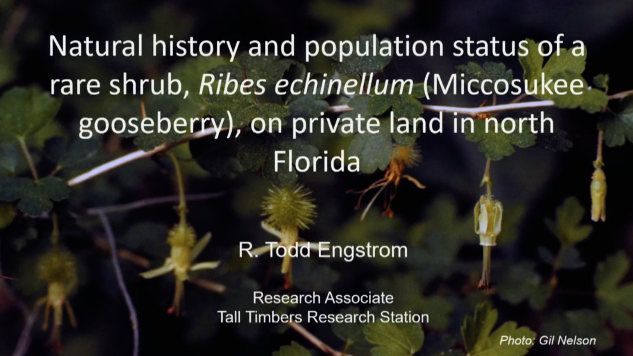
R. Todd Engstrom, Tall Timbers Research Station and Land Conservancy The Miccosukee gooseberry (Ribes echinellum) was discovered in on private land in Jefferson County, Florida, in 1924. A second population was located in McCormick County, South Carolina, in 1957, but this is a study of the Florida population only. The species was classified as federally […]
Read More…
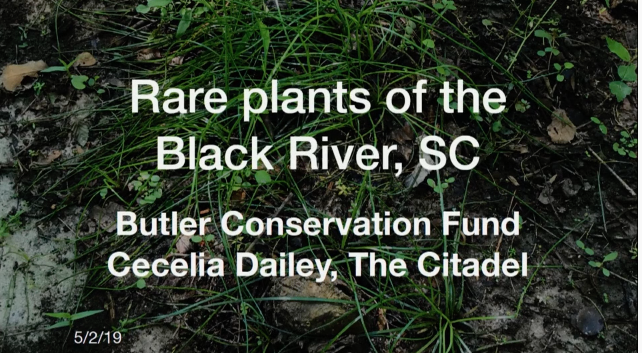
Butler Conservation Fund (land owner), USFWS (affiliate), Cecelia Dailey, M.S. Candidate, The Citadel; Dr. Richard D. Porcher, Dr. Joel Gramling, Dr. Jean Everett, Dr. Timothy Callahan, Michael Kunz, April Punsalan, Dr. John Nelson, Keith A. Bradley, Dr. Brian Scholtens, Dr. Jay F. Bolin, Peter Schafran, Steve Bowling, Dana Beach, Jonathan Keyser, Nathan Platt, and Kevin […]
Read More…
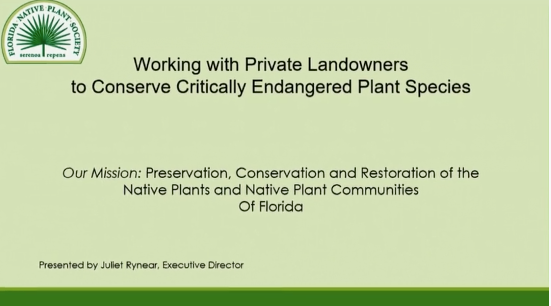
Juliet Rynear, Florida Native Plant Society Executive Director The Florida Native Plant Society (FNPS) is working with private landowners to help conserve critically endangered plant species. Two of our projects represent the importance and value of this work: the Warea Partnership Project and the TorreyaKeepers Project. Warea amplexifolia (clasping warea) is a federally-listed endangered plant […]
Read More…
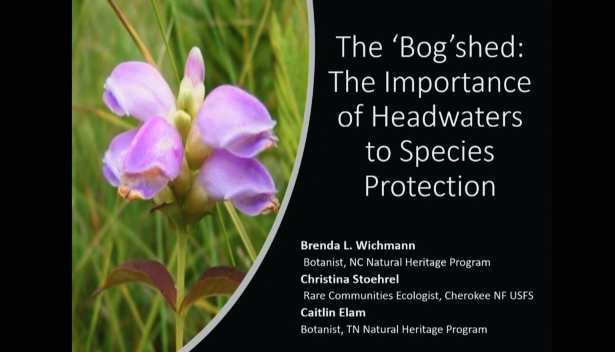
Brenda L. Wicchman, North Carolina Natural Heritage Program Chris Stoehrel U.S. Forest Service, Cherokee National Forest Caitlin Elam Tennessee Natural Heritage Program, Division of Natural Areas Some of the rarest wetlands in the southeastern United States are the non-alluvial wetlands of the Blue Ridge region. Many of these wetlands are current conservation areas or priorities […]
Read More…
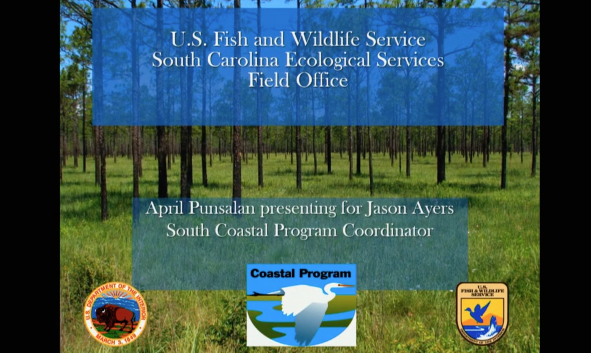
April Punsalan, U.S. Fish & Wildlife Service April Punsalan describes work that Jason Ayers has done with the South Coastal Program in South Carolina protecting and restoring wetland ecosystems. […]
Read More…

Jeremy Frencha and Brittney Viers, Quail Forever/Southeastern Grasslands Initiative The southeastern region of the U.S. was one of the most diverse grassland regions of North America, yet more than 99% has been lost due to such factors as conversion to row crop agriculture, forest succession, and wetland drainage. Reversing the decline in grassland biodiversity will […]
Read More…
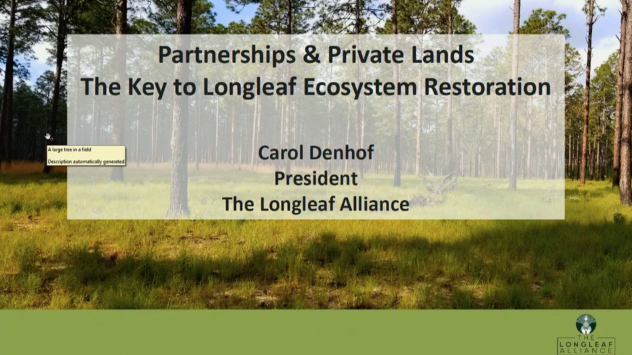
Carol Denhof, Longleaf Alliance The Longleaf Pine was once the dominant tree species in the south, covering over 90 million acres from Virginia to Texas. Over the last 400 years, the abundance of this species has decreased due to non-sustainable timber harvest, clearing of land for agriculture and development and exclusion of fire. As this […]
Read More…
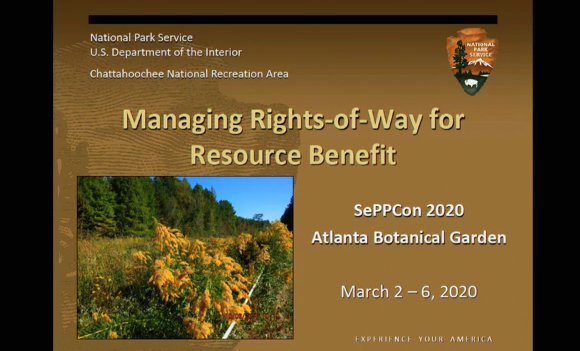
Allyson Read, Natural Resource Specialist, Chattahoochee River National Recreation Area, National Park Service The Chattahoochee River National Recreation Area stretches along 48 miles of the Chattahoochee River from Buford Dam at Lake Lanier to Peachtree Creek in the city of Atlanta. The federal park includes the river plus 16 land units that provide almost 70% […]
Read More…
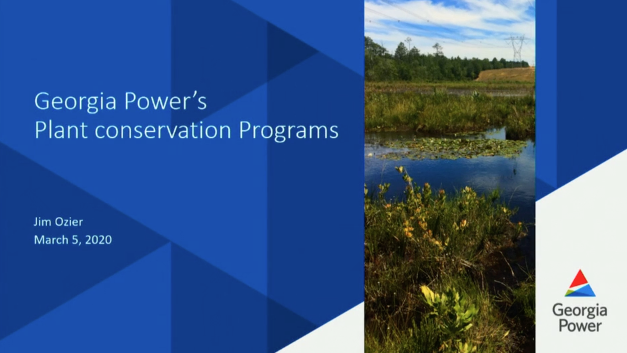
Jim Ozier, Environmental Specialist, Environmental and Natural Resources, Georgia Power Company The Georgia Power Company is an investor-owned utility that generates, delivers, and markets electricity throughout most of the state. The company is one of the state’s largest private landowners; conservation attributes of these lands include a refuge for the world’s only population of Georgia […]
Read More…
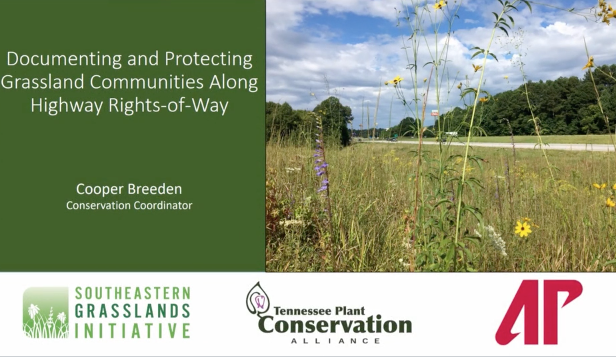
Cooper Breeden and Dwayne Estes, Southeastern Grasslands Initiative / TPCA In Fall 2019, conservation partners from across the southeast began to convene on a monthly call to discuss how to tackle the complex problem of improperly managed roadsides—roadsides that are either being sprayed or mowed to death to the detriment of rare and unique plant […]
Read More…
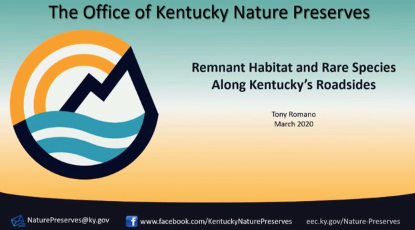
Tara Littlefield and Tony Romano, Office of Kentucky Nature Preserves Roadsides are increasingly recognized for their potential importance in conservation planning. Roadsides are generally less threatened by development than surrounding areas and are maintained in an open condition. Because of these factors, roadsides in Kentucky are one of the few areas that contain remnant native […]
Read More…
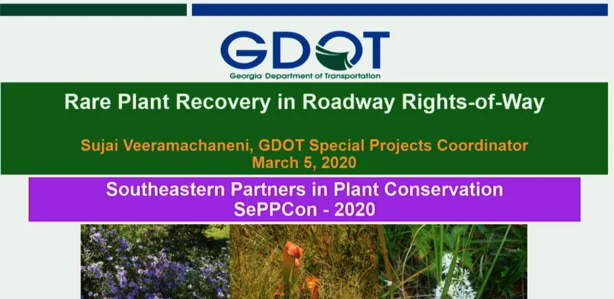
Sujai Veeramachaneni (GDOT), Felicity Davis (GDOT), Chris Goodson (GDOT), Anna Yellin (WRD), Meg Hedeen (GDOT), Carrie Keogh (Emory University) Protected plant species that prefer open and forest edge habitats can find unexpected homes in regularly maintained transportation rights-of-way. Avoidance and minimization of these resources is a critical goal for the Georgia Department of Transportation (GDOT) […]
Read More…
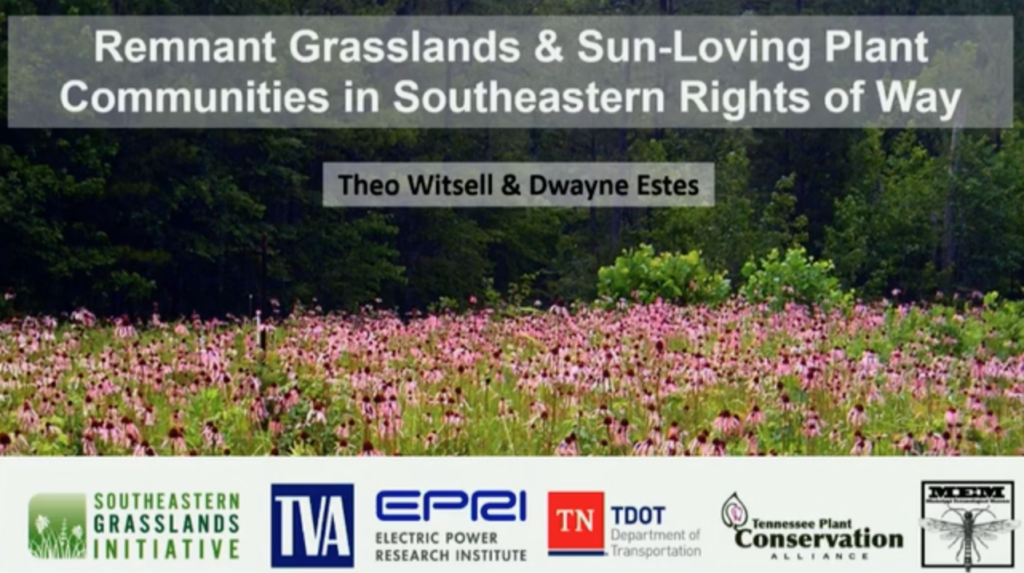
Dr. Dwayne Estes, Southeastern Grasslands Initiative Plant Conservation Issues on Roadsides and Right of Ways in Alabama Patrick Thompson, Coordinator Alabama Plant Conservation Alliance Alfred Schotz, Botanist Alabama Natural Heritage Program Michelle Reynolds, Administrator Southeastern Roadside Defenders Patrick Daniel, Collaborator Southeastern Roadside Defenders Alabama has a diversity of habitats, species, ideologies and challenges. Private lands […]
Read More…

















